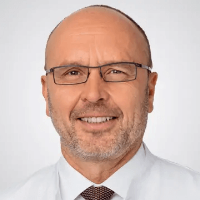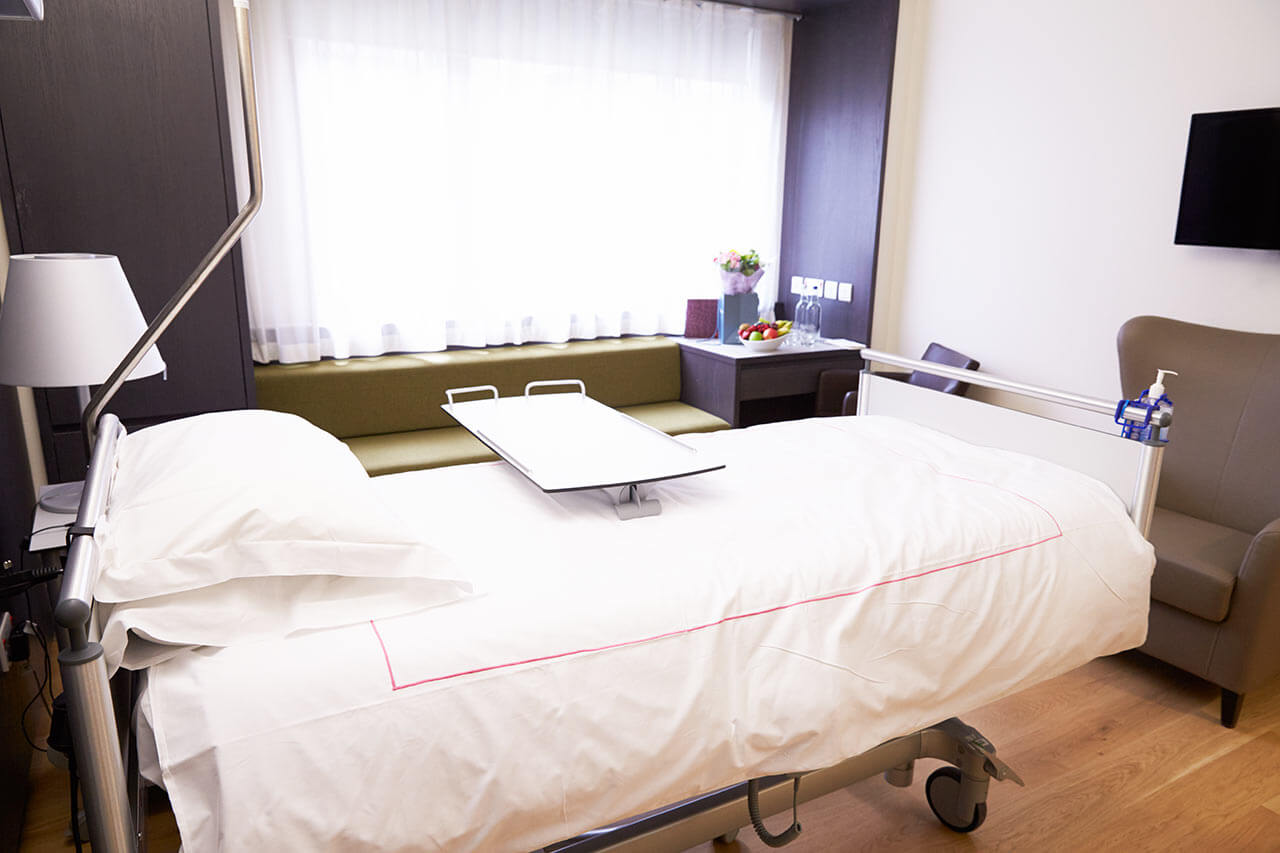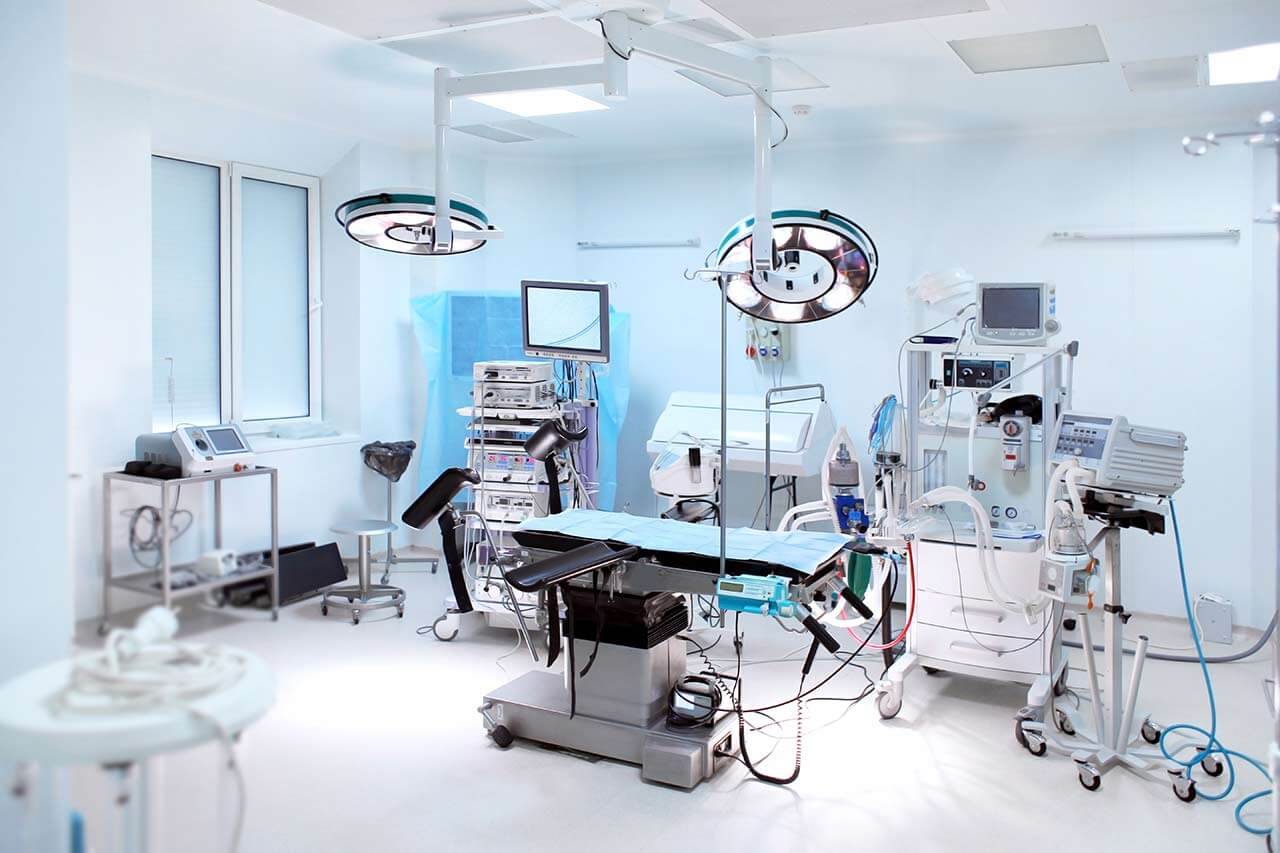
The program includes:
- Initial presentation in the clinic
- clinical history taking
- physical examination
- review of medical records
- laboratory tests:
- complete blood count
- general urine analysis
- biochemical analysis of blood
- indicators of inflammation (CRP, ESR)
- indicators blood coagulation
- x-ray examination of the hip
- MRI scan of the hip
- preoperative care
- hip replacement (hip endoprosthesis)
- symptomatic treatment
- control examinations
- physiotherapeutic procedures
- orthopedic appliances
- the cost of essential medicines and materials
- nursing services
- full hospital accommodation
- explanation of future recommendations
How program is carried out
Preliminary preparation for hip replacement includes quitting smoking and drinking alcohol; cancelling non-steroidal anti-inflammatory drugs (diclofenac, ibuprofen); cancelling anticoagulants (warfarin); normalization of body mass, if possible.
Preoperative examination, including consultation with an anesthesiologist and necessary related specialists, takes 1-2 days. According to its results, the most suitable endoprosthesis is selected.
Hip replacement. The operation is performed under general anesthesia. The patient lies on his side, the affected leg is bent and fixed in this position. The surgeon makes an incision 15-20 cm long, minimally traumatizing the muscles and nerve endings. Through this incision, miniature instruments are inserted to remove the damaged joint structures. Healthy bone is adjusted for further reliable implant fixation.
The surgeon installs a femoral stem in the center of the upper part of the femur. Ball-shaped head of the joint is fixed on it. The surgeon also implants a special liner that facilitates movement of the leg and protects the structures of the prosthesis. After the primary fixation of the prosthesis components, the doctor assesses the joint range of motion, as well as the length and symmetry of the lower limb.
The implant is fixed with cement or cementless method. The doctor treats the operating field with antiseptics, conducts its final revision and sutures the wound layer by layer. A temporary drainage is installed in the joint, and a bandage is applied on top.
Postoperative care. During the first day after the intervention the patient stays in the intensive care unit, under round-the-clock medical supervision. After that, with a smooth course of the postoperative period, the patient is transferred to a regular ward and the drains are removed. The range of motion expands gradually, from light toes movements to walking. Walking with the use of walking aids is allowed in 3-5 days after the operation.
Required documents
- Medical records
- X-ray examination (if available)
- MRI/CT scan (if available)
Service
You may also book:
 BookingHealth Price from:
BookingHealth Price from:
About the department
According to the Focus magazine, the Department of Arthroplasty at the ATOS Orthoparc Clinic Cologne is one of the best medical facilities in Germany for knee and hip surgery!
The department offers a full range of medical services in the field of joint replacement surgery. An experienced team of orthopedists successfully performs knee and hip replacement surgery. Surgical options include partial and total arthroplasty, as well as revision joint replacement surgery. Patients after hip replacement surgery are offered a special accelerated mobility program called "Rapid Recovery". Before prescribing arthroplasty, the attending physician studies the patient's medical history and conducts a comprehensive diagnosis, the results of which determine the advisability of surgery. Arthroplasty is performed using minimally invasive techniques and computer-assisted navigation, providing patients with the desired result and a high degree of treatment safety. The department's surgeons have successfully performed tens of thousands of knee and hip replacements, so patients can trust them with their health.
The Head Physician of the department is Prof. Dr. med. Joachim Schmidt. The specialist has more than 30 years of clinical experience in the field of joint replacement surgery. During his practice, he has personally performed over 10,000 surgical procedures, including especially complex ones. Prof. Schmidt is one of the best arthroplasty specialists in Germany, whose exceptional professionalism is recognized by patients and the national and international medical communities.
The department enjoys the status of an Arthroplasty Center certified in accordance with EndoCert standards. This certification is only awarded to the best medical institutions in Germany specializing in joint replacement surgery. The department has accumulated impressive experience in the field of knee replacement surgery for patients with advanced stages of gonarthrosis. The pathology causes severe symptoms such as severe pain, stiffness in movement (in advanced stages, gonarthrosis may lead to complete immobilization and disability), lameness, and swelling in the area of the affected joint. Unfortunately, the symptoms of end-stage knee arthrosis are hardly amenable to conservative therapy, so the specialists of the department resort to surgery. The essence of arthroplasty is to replace the knee joint with an artificial prosthesis, which allows to restore mobility and eliminate pain. Depending on the severity of the knee joint damage, the patient may be indicated for partial or total joint replacement surgery. The operation is performed using minimally invasive techniques under local or general anesthesia; the duration of the surgical procedure is about 1.5-2 hours. After arthroplasty, it is recommended to undergo rehabilitation in a specialized center, because only an experienced rehabilitation specialist can help the patient to master the skills of walking with a prosthesis and consolidate the results of the operation. The department's orthopedists implant high-quality prostheses with a minimum life span of 20 years.
The department's team of doctors is also successful in hip replacement surgery. The operation is indicated for hip arthrosis (coxarthrosis), avascular necrosis of the femoral head, hip dysplasia, and periprosthetic fractures after primary arthroplasty. The above pathological conditions cause painful sensations in the joint and radiating pain (for example, in the groin or thigh), limited mobility, lameness, and thigh muscle atrophy. To eliminate them, painkillers, physiotherapy, intra-articular injections, and other therapeutic measures are used as first-line treatments. If these fail, partial or total hip replacement surgery is indicated. The specialists of the department perform arthroplasty with cementless and cemented fixation: the first option involves fixing the prosthesis by hammering it into the bone, it is most often indicated for young patients; cemented fixation uses a special polymer bone cement, since the patient's own bone tissue does not have sufficient density for reliable fixation of the prosthesis (this technique is usually used in elderly patients). Hip replacement surgery is performed in the department using minimally traumatic techniques that ensure minimal blood loss and the fastest possible restoration of mobility in the postoperative period. Return to full activity after hip arthroplasty takes 6-12 weeks, depending on the individual characteristics of the body.
The department's clinical focuses include the following:
- Partial and total knee arthroplasty
- Partial and total hip arthroplasty
- Revision knee and hip arthroplasty after primary prosthesis implantation
- Special postoperative recovery program after hip arthroplasty – "Rapid Recovery"
- Other medical services
Curriculum vitae
Higher Education and Professional Career
- 1976 - 1982 Medical studies, University of Cologne.
- 1982 Thesis defense, Faculty of Medicine, University of Cologne.
- 1994 Habilitation, Faculty of Medicine, University of Cologne.
- 1997 Scholarship (USA, Canada, and UK) of the German, Austrian, and Swiss Societies of Orthopedics and Trauma Surgery.
- 2001 Extraordinary Professorship, Faculty of Medicine, University of Cologne.
Professional Career
- 1983 Work in the Department of Sports Medicine, Bundeswehr Sports School Warendorf.
- 1984 Surgical clinical training, Maria-Hilf Hospital Bergheim.
- 1985 - 1989 Clinical training for board certification, Department of Orthopedics, University Hospital Cologne.
- 1989 - 1998 Senior Physician, Department of Orthopedics, University Hospital Cologne.
- 1999 - 2010 Medical Director, Sana Holy Trinity Hospital Cologne.
- 2004 - 2010 Attending Physician and Medical Director, ATOS MediaPark Clinic in Cologne.
- 2011 Opening of the Department of Arthroplasty at the ATOS Orthoparc Clinic Cologne.
- Since 2011 Medical Director, ATOS Orthoparc Clinic Cologne; Head Physician of the Department of Arthroplasty at the same clinic.
- Since 2023 Deputy Medical Director, ATOS Orthoparc Clinic Cologne.
Memberships in Professional Societies and Organizations
- German Society for Orthopedics and Trauma Surgery (DGOU).
- Professional Association of German Orthopedists (BVOU).
- Association of South German Orthopedists (SOV).
- Examination Board of the Medical Association of the North Rhine.
Photo of the doctor: (c) ATOS Orthoparc Klinik Köln
About hospital
According to the prestigious German Focus magazine, the ATOS Orthoparc Clinic Cologne is one of the best medical facilities in Germany in the field of knee, hip, and shoulder surgery, as well as in the field of foot surgery and spinal surgery!
The clinic specializes in conservative and surgical treatment of musculoskeletal pathologies of any complexity. Of particular interest to the ATOS Orthoparc Clinic Cologne are such areas of orthopedics as knee and hip arthroplasty, arthroscopic interventions on large joints, treatment of foot and hand pathologies, treatment of sports injuries, treatment of osteoporosis, and conservative and surgical treatment of spinal diseases and injuries. The clinic's daily work is based on the principle of providing high-quality medical care, taking into account the individual needs of each patient. The clinic offers modern infrastructure, state-of-the-art equipment, and highly qualified personnel. The specialists are attentive, responsive, and always ready to answer patients' questions, ensuring a comfortable stay and high-quality treatment.
Only highly effective methods are used during the therapeutic process. Conservative therapy (for example, treatment with tablets, intra-articular injections, physiotherapy, or massage) is always used as first-line treatment; the decision to perform surgery is made only when conservative methods fail. Surgical procedures are performed in high-tech operating rooms. Doctors almost always use sparing minimally invasive and arthroscopic techniques, which significantly shorten the postoperative recovery period. After knee and hip replacement surgery, patients are offered a unique Rapid Recovery program.
The ATOS Orthoparc Clinic Cologne has been successfully operating for several decades, during which time it has managed to take a leading position among orthopedic centers in the national healthcare system. The clinic's specialists regularly treat many patients from abroad, which testifies to the excellent reputation of the medical institution in the international medical arena. The clinic strictly adheres to hygiene and safety standards. The doctors are guided by the current clinical protocols and recommendations of the German Society for Orthopedics and Trauma Surgery (DGOU) and the German Society for Orthopedics and Orthopedic Surgery (DGOOC). Great importance is attached to understanding the individual needs of patients and treating them with humanity and respect.
Photo: (с) depositphotos
Accommodation in hospital
Patients rooms
The patients at the ATOS Orthoparc Clinic Cologne stay in comfortable single and double rooms decorated in bright colors. The standard patient room includes an automatically adjustable bed with an orthopedic mattress, a nightstand, a table, a chair, a telephone, and a TV. The patient rooms are also equipped with lockers for personal belongings. Each patient room has an ensuite bathroom with a shower and toilet.
The clinic has a pleasant and calm atmosphere, which contributes to the positive attitude of the patients and their rapid recovery.
Meals and Menus
The clinic offers delicious and balanced meals three times a day: breakfast, lunch, and dinner. Meals are provided by renowned international catering company SV Group with the participation of professional nutritionists.
If, for some reason, you cannot eat all the products, you will be offered an individual menu. Please inform the medical staff of your dietary preferences prior to the start of your treatment.
Further details
Standard rooms include:
![]() Toilet
Toilet
![]() Shower
Shower
![]() Wi-Fi
Wi-Fi
![]() TV
TV
Accompanying person
Your accompanying person may stay with you in your patient room or at the hotel of your choice during the inpatient program.
Hotel
You may stay at the hotel of your choice during the outpatient program. Our managers will support you for selecting the best option.




